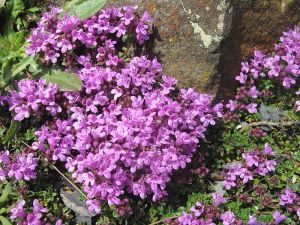Dear pagan readers,
Today I will introduce you to a tree parasite just as important as the mistletoe for the pagans living close to the arctic circle. The documentation about this sacred tree parasite regarding mythology in ancient times is almost non existant. For the pagan tribes using it had a very strong oral tradition but an almost non existant written tradition. These were mostly druidic tribes, like the gaels, gauls, etc. and we all know that invasions, conquests and assimilations did not left much information about their lore and myths, their knowledge and vast wisdom. But I did my best to gather the available knowledge on the subject. The host tree I already discussed in an earlier article: the birch tree.
The Celtic birch, or ‘Beith’, played a spiritual role in the lives of our Gaelic ancestors, symbolising renewal and purification. ‘Beith’ was the first letter B in the early medieval Celtic tree alphabet or ‘Ogham’ and also represented the first month of the Celtic year.
The birch was part of the celebration during the festival of Samhain (what is now Halloween) held from sunset on 31 October to sunset on 1 November, which marked the culmination of summer and the harvest period with the onset of winter. During this period, ‘besoms’, or brooms made of birch twigs, were used to drive out the spirits of the old year in anticipation of the return of spring and a new awakening.
The birch tree, or ‘Lady of the Woods’ represented fertility and new birth, and in this way, echoed Norse mythology where the birch is dedicated to Thor, and also to the goddess Frigga, the goddess of marriage, childbirth and motherhood. A ‘besom wedding’ was a marriage ceremony also referred to as ‘jumping the broom’, where the besom would be held over the doorway of the couple’s home, and the couple would jump over it and then be married. It is still possible to ‘jump the broom’ as part of a traditional Highland wedding ceremony today. Birch was also featured prominently in the May Day festival of Beltane. The fires of Beltane were kindled with birch twigs and fertility dances would be performed around an often living birch maypole to ensure health and abundant crops.
There are a variety of medicinal and even beautifying properties attributed to different parts of the birch tree by folklore and herbalism. The astringent leaves have diuretic and antiseptic properties. Consumed as a tea, the leaves were, and still are, used as a remedy for cystitis and other urinary tract infections. They were also used to dissolve kidney stones and relieve rheumatism and gout. The sap as discussed in an earlier article was given for kidney and gall-bladder stones, and also for rheumatism and gout. Women in the Highlands were known to use birch sap as a hair shampoo and even to rinse their hair with an infusion of spring birch twigs. Both birch tea and sap contain significant amounts of vitamin C. The bark, when soaked in hot water, was applied to the body to ease muscle pain. The ancient practice of dry distilling birch bark also produces an oil or ‘birch tar’ which contains antiseptic compounds or phenols (which are highly concentrated in chaga, oups, I just gave the clue…), making it useful for the treatment of skin wounds or infections. There is evidence of birch tar chewing gum being used thousands of years ago to treat gum infections. Birch tar is still regarded as an effective treatment for acne, eczema, psoriasis and dandruff. Birch tar soap certainly has a very pungent, though not unpleasant, antiseptic smell. The tender inner layer of birch bark, known as the cambium, can also be made into a surprisingly delicious and refreshing tea, or even ground down into a flour for baking. But historically, it has been used mostly when the crops were bad.
So the birch tree has great importance in Celtic folklore and medicine, and can even be consumed as a food. No wonder chaga mushroom, the sacred mushroom, which concentrates within it the therapeutic phytonutrients of the birch, whilst adding a myriad of its own, is such a powerful medicinal mushroom. What we call ‘Chaga’ is the dense black mass (25-40 cm large) that can be seen on the outside of trees (almost exclusively birches) infected with the fungus Inonotus obliquus. It is not a fruiting body (meant for spreading spores, the final stage in the life of many mushrooms) but a dense sterile mass of mycelia, with decayed bits of birch tissue incorporated. When chopped from the tree the interior has a rusty yellow-brown color, somewhat granular in appearance, and is often mottled with whitish or cream-colored veins. The hard, deeply cracked black outside of the Chaga is called the sclerotium. This is important, because this sclerotium contains a massive amount of a specific fungi-melanin, giving a very high level of anti-oxidants and turning Chaga into powerful anti-aging tool. Typically, well-developed Chaga sclerotia are found on trees over 40 years of age, but the infection starts earlier. The period from initial infection to tree death varies with the number of infection sites and tree resistance, but is typically around 20 years. After about 3-5 years the Chaga can be harvested. After harvesting, chaga can regrow to harvestable size again in three to ten years, and this can be repeated until the tree dies. Chopping off the Chaga does not stop the infection.
‘Chaga tea’ was used for the treatment of an upset stomach and intestinal pains. Such a decoction was (and still is) especially popular among hunters and foresters, since this drink alleviates hunger, removes tiredness, refreshes, and increases work capacity. Chaga tea is also used as a means of improving the general tone. Patients were (and still are) frequently recommended to use chaga extracts when it was necessary to reduce the arterial or venous blood pressure. Chaga infusions were (and still are)also used for the treatment of periodontitis, eczema, dermatitis, and psoriasis. Inhalations of chaga with other herbs are until today being used to reduce inflammations in the nasopharynx and to facilitate breathing. Chaga was also used in agriculture, in particular in animal breeding: adding chaga to the ration of pigs stimulates the growth of piglets and accelerates the weight gain of fatteners. Chaga has also been used as a plant growth stimulator, like fertilizer. Chaga develops best in very cold regions and it appears that the more harsh the climate and the swings in temperature, the better the therapeutic quality of the Chaga. Harsh climate + birch forest = high Chaga potential!
Chaga was and is still used for general well-being, internal cleaning (we would call it ‘detoxing’) and curing and preventing disease in general, but in particular for liver problems, heart problems, tuberculosis and to get rid of parasitic worms. It was prepared as a tea. (method of preparation: cut up dried Chaga, put it into boiling water, boil for several minutes.)Three cm3 were used for 2.5 l of tea, and the tea was drunk until the ailment was cured. The Chaga was also used to make ‘soap water‘. To make ‘soap water‘ the fungus was first put into the fire. When it turned red (like smoldering charcoal) it was put into a bucket of hot water and then stirred until it broke into small pieces. The black water thus obtained has a strong cleaning and disinfecting ability. This ‘soap water‘ was used to wash the genitals of women during menstruation and after birth; sometimes new-born babies were also washed. It can be compared to the effect of a KMnO4 solution (potassium permanganate; a disinfectant used in Russia to wash new-borns the first three months after their birth) and stated that women who washed themselves with such water, never took ill. In older times it had been used instead of soap to wash the hands, feet and sometimes also the whole body. Chaga was also burned and the smoke was inhaled; its purpose was ritual cleaning.
As you can see, the Chaga was an essential for survival in the northern regions. It’s multitude of purposes and benefits and the hunt linked to it’s harvest clearly justify his sacred status. About the hunt, I guess the fact that 1 birch tree out of 10000 bears chaga justify calling the harvest a “hunt”. For our ancestors, to have found a chaga was likely to have been a greater discovery than that of finding gold. Thus the chaga beholder was probably seen as some kind of savior and must have been honored by the whole tribe. For the survival and wealth of their tribe was secured by the chaga. I highly recommend you to use it on a daily basis if you manage achieve a successful hunt…
Hail and joy!
Fred














